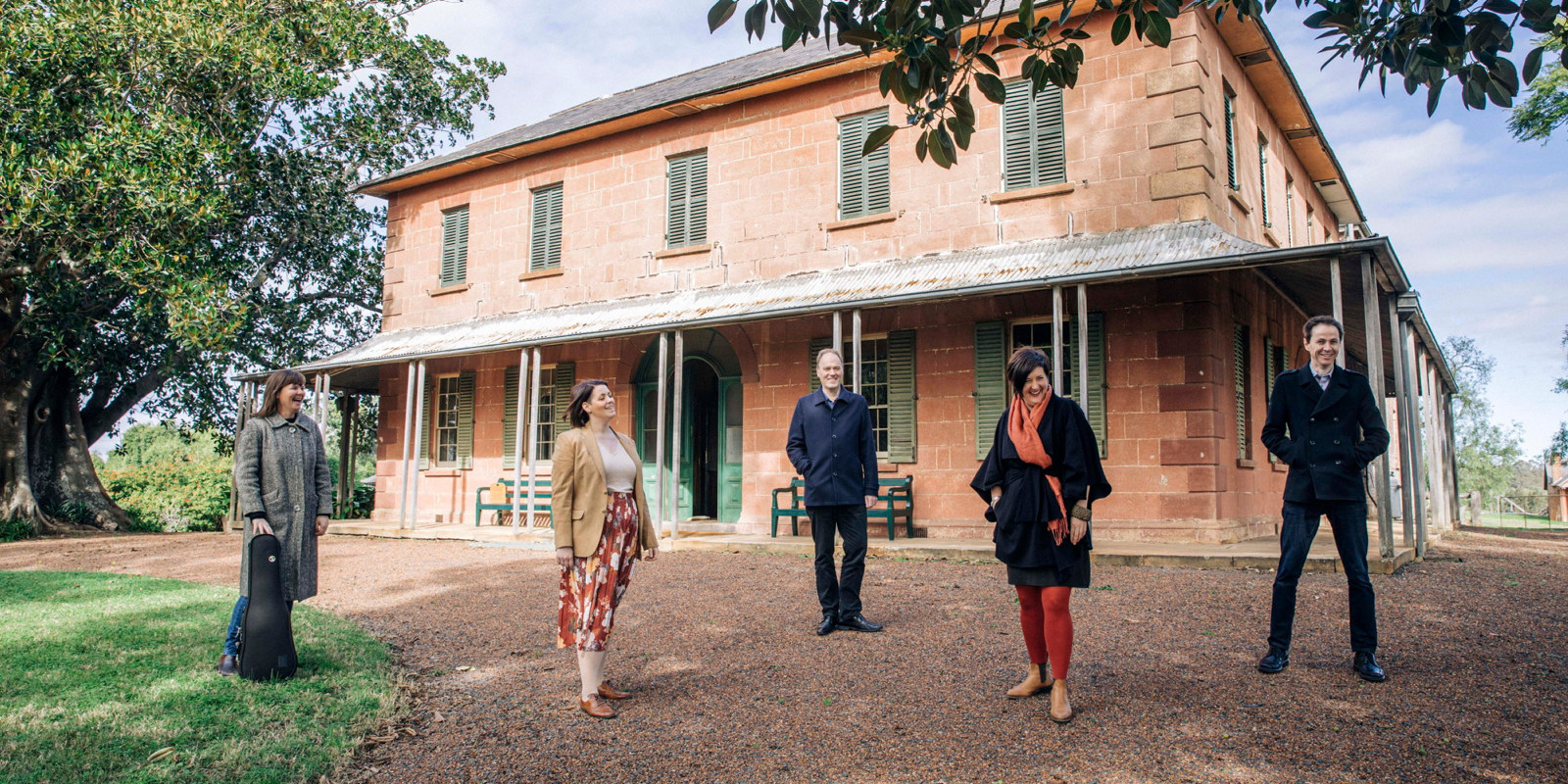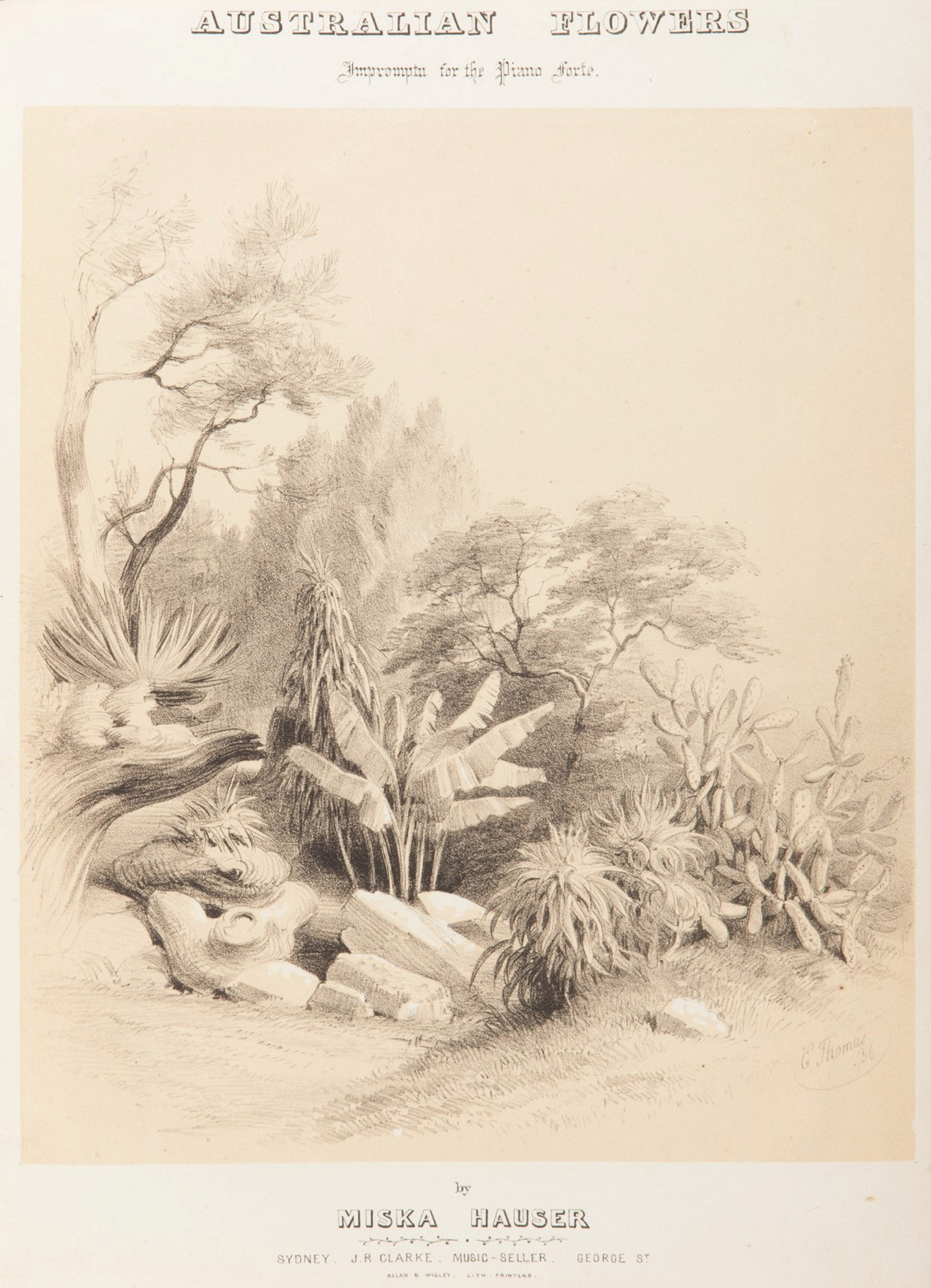‘The Ballad Singer’
Romanticised themes of antiquated English traditions continued to feature in songs popular in Australia in the mid-nineteenth century.
One of the many works by forgotten composers and lyricists that lie in the sheet music collection at Rouse Hill Estate is ‘The Ballad Singer’, by George Linley (1798–1865). What can only be described as a charming little ditty with a pretty coloured cover, published in 1854, is one of many songs by Linley to have survived in Australian collections. Born in Leeds, England, Linley was an insatiable wordsmith who composed song lyrics, hymns, ballads, musical arrangements of nursery rhymes, folksongs, and operatic works. Believed to have had no musical training, the often-sentimental lyrics of his several hundred songs contrast notably with his strongly worded attacks on the music critics of the day.
Ballad singers used to travel the towns and cities in Britain in the eighteenth and early nineteenth centuries singing and selling cheap printed song lyrics to the townsfolk. The theme of ‘The Ballad Singer’ would have been familiar to the Rouse family but probably only as a romanticised literary device and as depicted in delicate porcelain figurines rather than any real memory of English street hawkers. By the 1850s, when the Rouses purchased this song, they were shoppers at Sydney’s music shops and had developed consumer habits that would be familiar to us today.
Linley did not visit Australia, but his lyrics were used by opera composer William Vincent Wallace who had worked in Australia in the 1830s and was immensely popular here. George Linley’s son, also George, was a poet and toured Australia around the time of the release of ‘The Ballad Singer’. The local press reported on George’s visit, making reference to his more famous father, and he is best remembered for his publication ‘The Goldseeker and other Poems’, which was based on his experiences here.
Watch the performance
Listen to Amy Moore share her performance of ‘The Ballad Singer’. This is the only know recording of this song, so we have shared a performance of another of Linley’s songs as well videos about a recent fantasy video game using the same title as our featured song.
This video was recorded at home in 2020 during a COVID-19 lockdown.
Supported by: City of Sydney
More music

House Music at Your House
We delved into the hundreds of popular songs that survive in the collection at Rouse Hill Estate in north-west Sydney to bring you the top 20 hits of the 1840s and 50s – songs played across NSW, Australia and overseas
Published on
Related
![Owner bound volume of assorted songs, in the collection of Rouse Hill House & Farm, 1850-1864. [music]](https://images.slm.com.au/fotoweb/embed/2023/10/615fb53b45ca4bfb8d979b01993be8c3.jpg)
‘Home! Sweet Home!’
It may come as a surprise that the expression ‘home, sweet home’ originates from a song title

'Australian Flowers'
Given that much of the music played in Australia in the 19th century had been imported, one might ask what constituted an ‘Australian’ piece of music?
![Owner bound volume of assorted songs, in the collection of Rouse Hill House & Farm, 1850-1864. [music]](https://images.slm.com.au/fotoweb/embed/2023/10/a9105b4396da4a59b6264185991510a7.jpg)
‘All Things Love Thee, So Do I’
There was often a strong connection between music publishing and retail and entrepreneurial composer-producers
![Owner bound volume of assorted songs, in the collection of Rouse Hill House & Farm, 1850-1864. [music]](https://images.slm.com.au/fotoweb/embed/2023/10/d0c2d319da2f453bad0e036562eadb1a.jpg)
‘Annie Laurie’
The tune to this ‘old’ ballad ‘Annie Laurie’ may not have been quite as old as the Rouse family thought